Kingdom Plantae Family Piperaceae Scientific name Piper methysticum Rank Species | Order Piperales Genus Piper Higher classification Pepper | |
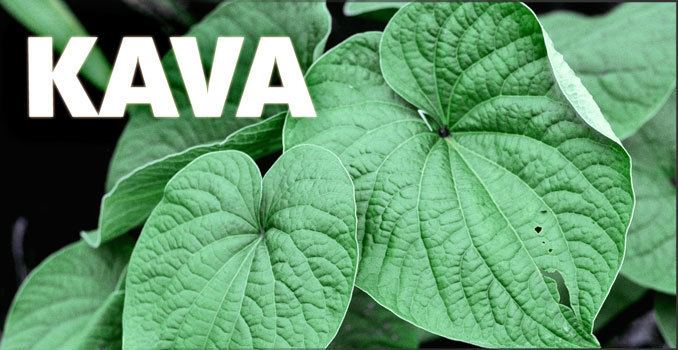 | ||
Similar Mitragyna speciosa, Valerian, Perforate St John's‑wort, Passion Flower, Sage of the diviners | ||
Kava tea the benefits and uses of kava
Kava or kava-kava (Piper methysticum: Latin "pepper" + Latinized Greek "intoxicating") is a crop of the western Pacific.
Contents
- Kava tea the benefits and uses of kava
- Kava kava root review uses side effects health benefits
- Characteristics
- Strains
- Noble and non noble kava
- Kava growing regions
- Relationship with kawakawa
- Composition
- Constituents
- Pharmacodynamics
- Detection
- Traditional preparation
- Supplements and pharmaceutical preparations
- Kava culture
- Kava bars
- General effects
- Traditional medicine and research
- General observations
- Effects on the liver
- Potential interactions
- Kava dermopathy
- Regulation
- Australia
- Europe
- New Zealand
- North America
- Vanuatu
- References
The name kava(-kava) is from Tongan and Marquesan; other names for kava include ʻawa (Hawaiʻi), ʻava (Samoa), yaqona (Fiji), sakau (Pohnpei), and malok or malogu (parts of Vanuatu).
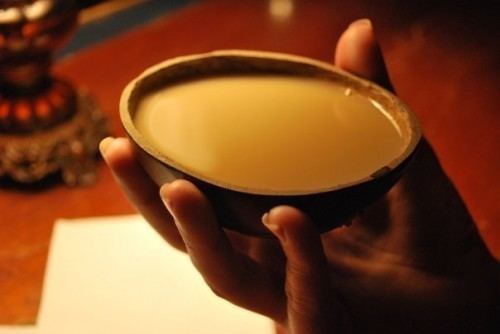
The roots of the plant are used to produce a drink with sedative, anesthetic, euphoriant, and entheogenic properties. Kava is consumed throughout the Pacific Ocean cultures of Polynesia, including Hawaii, Vanuatu, Melanesia and some parts of Micronesia for its sedating effects. Its active ingredients are called kavalactones. A Cochrane systematic review concluded it was likely to be more effective than placebo at treating short-term anxiety.
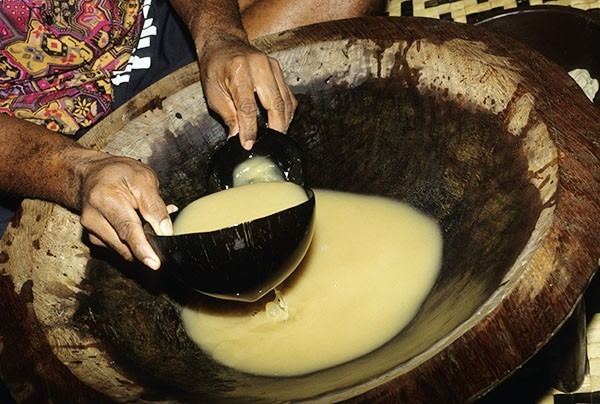
Kava kava root review uses side effects health benefits
Characteristics
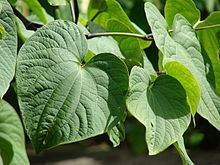
The several cultivars of kava vary in concentrations of primary and secondary psychoactive alkaloids. The largest number are grown in the Republic of Vanuatu, and so it is recognised as the "home" of kava. Kava was historically grown only in the Pacific islands of Hawaii, Federated States of Micronesia, Vanuatu, Fiji, the Samoas and Tonga. Some is grown in the Solomon Islands since World War II, but most is imported. Kava is a cash crop in Vanuatu and Fiji.
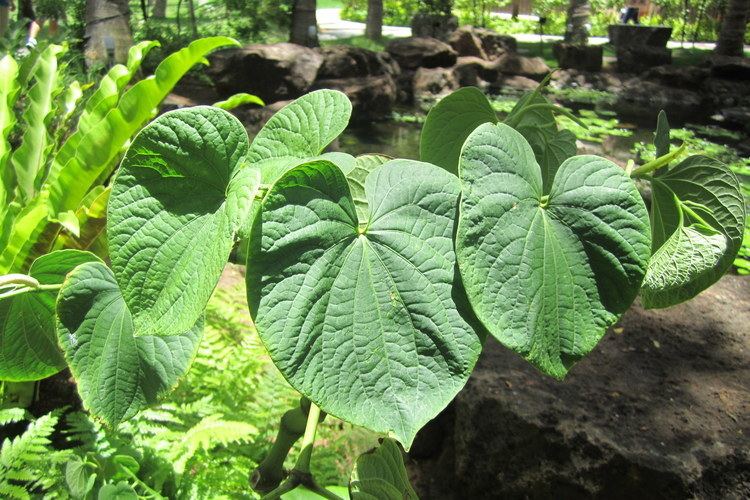
The kava shrub thrives in loose, well-drained soils where plenty of air reaches the roots. It grows naturally where rainfall is plentiful (over 2,000 mm/yr). Ideal growing conditions are 70–95 °F (21–35 °C) and 70–100% relative humidity. Too much sunlight is harmful, especially in early growth, so kava is an understory crop.
Kava cannot reproduce sexually. Female flowers are especially rare and do not produce fruit even when hand-pollinated. Its cultivation is entirely by propagation from stem cuttings.
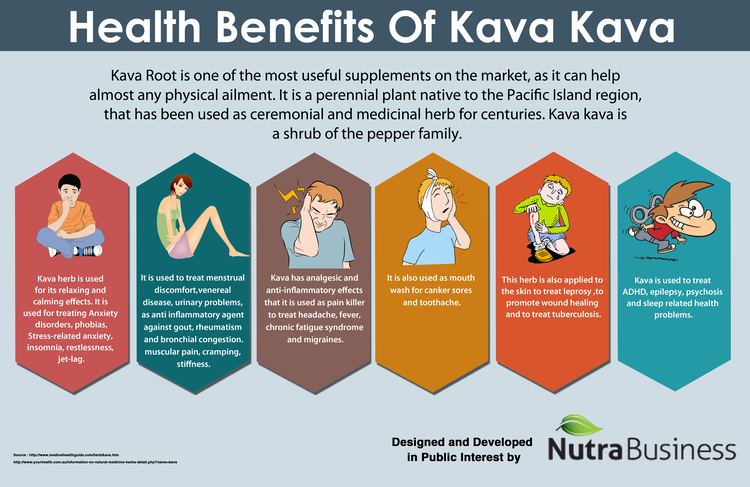
Traditionally, plants are harvested around four years of age, as older plants have higher concentrations of kavalactones. After reaching about 2 m height, plants grow a wider stalk and additional stalks, but not much taller. The roots can reach a depth of 60 cm.
Strains
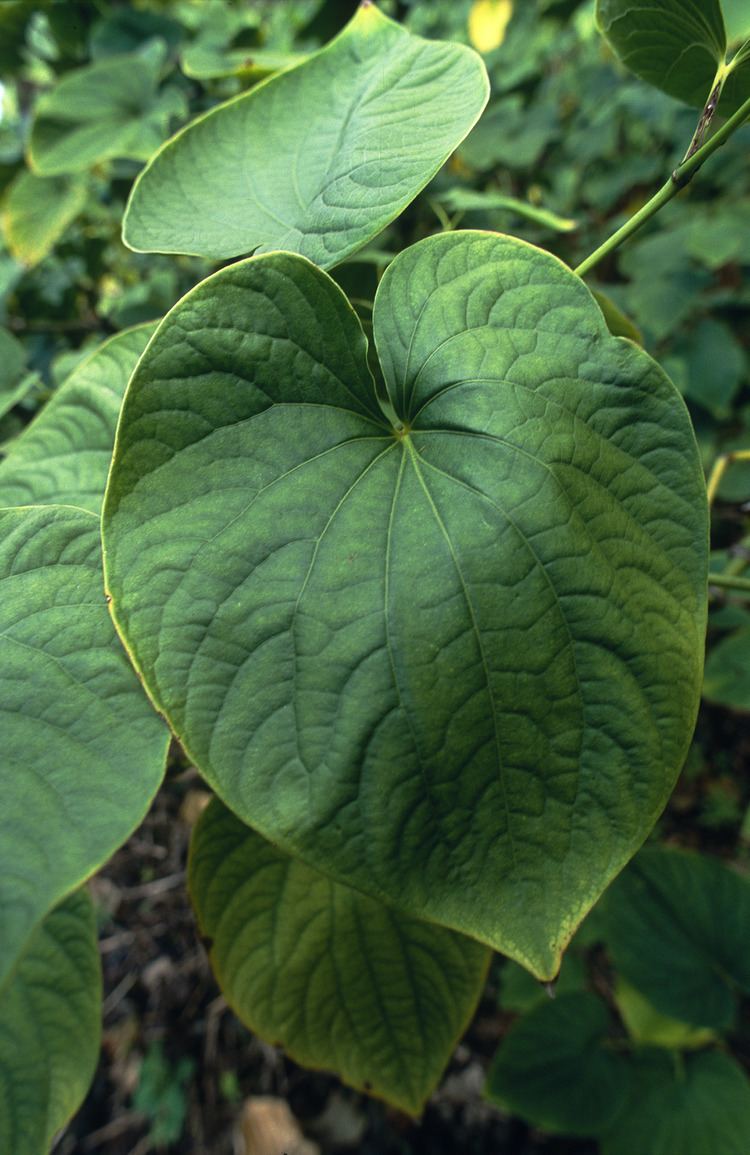
Kava consists of sterile cultivars cloned from its wild ancestor, Piper wichmanii. Today it comprises hundreds of different cultivars grown across the Pacific. Each cultivar has not only different requirements for successful cultivation, but also displays unique characteristics both in terms of its appearance, and in terms of its medicinal and psychoactive properties.
Noble and non-noble kava
Scholars make a distinction between the so-called "noble" and non-noble kava. The latter category comprises the so-called "tudei" (or "two-day") kavas, medicinal kavas and wild kava (Piper wichmanii, the ancestor of domesticated Piper methysticum). Traditionally, only noble kavas have been used for regular consumption due to their more favourable composition of kavalactones and other compounds that produce more pleasant effects and have lower potential for causing negative side-effects, such as nausea or "kava hangover".
The perceived benefits of noble cultivars explain why only these cultivars were spread around the Pacific by Polynesian and Melanesian migrants, with presence of non-noble cultivars limited to the islands of Vanuatu from which they originated. More recently, it has been suggested that the widespread use of tudei cultivars in the manufacturing of several kava products might have been the key factor contributing to the rare reports of adverse reactions to kava observed among the consumers of kava-based products in Europe.
Tudei varieties have traditionally not been grown in Hawaii and Fiji, but in recent years there have been reports of farmers attempting to grow "isa" or "palisi" non-noble cultivars in Hawaii and of imports of dried tudei kava into Fiji for further re-exporting. The tudei cultivars may be easier and cheaper to grow, while it takes up to 5 years for noble kava to mature, non-noble varieties can often be harvested just one year after being planted.
The concerns about the adverse effects of non-noble varieties produced by their undesirable composition of kavalactones and high concentrations of potentially harmful compounds not present in any significant concentration in the noble varieties have led to legislation prohibiting exports from such countries as Vanuatu. Likewise, efforts have been made to educate the non-traditional customers about the difference between noble and non-noble varieties and that non-noble varieties do not offer the same results as noble cultivars. In recent years, government regulatory bodies and non-profit NGOs have been set up with the declared aim of monitoring kava quality, producing regular reports, certifying vendors selling proper, noble kava and warning customers against products that may contain tudei varieties.
Kava growing regions
In Vanuatu, exportation of kava is strictly regulated. Only strains they deem as "noble" varieties that are not too weak or too potent are allowed to be exported. Only the most desirable strains for everyday drinking are selected to be noble varieties to maintain quality control. In addition, their laws mandate that exported kava must be at least five years old and farmed organically. Their most popular noble strains are "Boroguu" or "Boronggoru" from Pentecost Island, "Melomelo" from Aoba Island (called sese in north Pentecost Island), and "Palarasul" kava from Espiritu Santo. In Vanuatu, Tudei ("two days") kava is reserved for special ceremonial occasions and exporting it is not allowed. "Palisi" is a popular Tudei variety.
In Hawaii, there are many other strains of kava (Hawaiian: ʻawa). Some of the most popular strains are the Mahakea, Moʻi, Hiwa and Nene varieties. The Aliʻi (kings) of precolonial Hawaii coveted the Moʻi variety, which had a strong cerebral effect due to a predominant amount of the kavalactone kavain. This sacred variety was so important to them that no one but royalty could ever experience it, "lest they suffer an untimely death". The reverence for Hiwa in old Hawaiʻi is evident in this portion of a chant recorded by Nathaniel Bright Emerson and quoted by E. S. Craighill and Elizabeth Green Handy. "This refers to the cup of sacramental ʻawa brewed from the strong, black ʻawa root (ʻawa hiwa) which was drunk sacramentally by the kumu hula":
The day of revealing shall see what it sees: A seeing of facts, a sifting of rumors, An insight won by the black sacred ʻawa, A vision like that of a sacred god!Winter describes a hula prayer for inspiration which contains the line, He ʻike pū ʻawa hiwa. Pukui and Elbert translated this as "a knowledge from kava offerings". Winter explains that ʻawa, especially of the Hiwa variety, was offered to hula deities in return for knowledge and inspiration.
Relationship with kawakawa
Kawakawa (Piper excelsum) plant, known also as "Maori kava", may be confused with kava. While the two plants look similar and have similar names, they are different but related species. Kawakawa is a small tree endemic to New Zealand, having importance to traditional medicine and Māori culture. As noted by the Kava Society of New Zealand "in all likelihood, the kava plant was known to the first settlers of Aotearoa [New Zealand]. It is also possible that (just like the Polynesian migrants that settled in Hawaii) the Maori explorers brought some kava with them. Unfortunately, most of New Zealand is simply too cold for growing kava and hence the Maori settlers lost their connection to the sacred plant." Further, "in New Zealand, where the climate is too cold for kava, the Maori gave the name kawa-kawa to another Piperaceae M. excelsum, in memory of the kava plants they undoubtedly brought with them and unsuccessfully attempted to cultivate. The Maori word kawa also means "ceremonial protocol", recalling the stylized consumption of the drug typical of Polynesian societies". Kawakawa is commonly used in Maori traditional medicine for the treatment of skin infections, wounds and cuts, and (when prepared as a tea) for stomach upsets and other minor illnesses.
Composition
Fresh kava root contains on average 80% water. Dried root contains approximately 43% starch, 20% dietary fiber, 15% kavalactones, 12% water, 3.2% sugars, 3.6% protein, and 3.2% minerals. Kavalactone content is greatest in the roots and decreases higher up the plant. Relative concentrations of 15%, 10% and 5% have been observed in the root, stump, and basal stems, respectively.
The mature roots of the kava plant are harvested after a minimum of four years (at least five years ideally) for peak kavalactone content. Most kava plants produce around 50 kg (110 lb) of root when they are harvested. Kava root is classified into two categories: crown root (or chips) and lateral root. Crown roots are the large-diameter pieces that look like (1.5 to 5 inches (38 to 127 mm) diameter) wooden poker chips. Most kava plants consist of approximately 80% crown root upon harvesting. Lateral roots are smaller-diameter roots that look more like a typical root. A mature kava plant is about 20% lateral roots. Kava lateral roots have the highest content of kavalactones in the kava plant. "Waka" grade kava is made of lateral roots only.
Constituents
A total of 18 different kavalactones (or kavapyrones) have been identified to date, at least 15 of which are active. However, six of them, including kavain, dihydrokavain, methysticin, dihydromethysticin, yangonin, and desmethoxyyangonin, have been determined to be responsible for about 96% of the plant's pharmacological activity. Some minor constituents, including three chalcones, flavokavain A, flavokavain B, and flavokavain C, have also been identified, as well as a toxic alkaloid (not present in the consumable parts of the plant), pipermethystine.
Pharmacodynamics
The following pharmacological actions have been reported for kava and/or its major active constituents:
Receptor binding assays with botanical extracts have revealed direct interactions of leaf extracts of kava (which appear to be more active than root extracts) with the GABA (i.e., main) binding site of the GABAA receptor, the D2 receptor, the μ- and δ-opioid receptors, and the H1 and H2 receptors. Weak interaction with the 5-HT6 and 5-HT7 receptors and the benzodiazepine site of the GABAA receptor was also observed.
Potentiation of GABAA receptor activity may underlie the anxiolytic effects of kava, while elevation of dopamine levels in the nucleus accumbens likely underlie the moderately psychotropic effects the plant can produce. Changes in the activity of 5-HT neurons could explain the sleep-inducing action However, failure of the GABAA receptor inhibitor flumazenil to reverse the anxiolytic effects of kava in mice suggests that benzodiazepine-like effects are not contributing to the pharmacological profile of kava extracts.
Heavy, long-term use of kava has been found to not reduce ability in saccade and cognitive tests, but has been associated with elevated liver enzymes.
Detection
Recent usage of kava has been documented in forensic investigations by quantitation of kavain in blood specimens. The principal urinary metabolite, conjugated 4'-OH-kavain, is generally detectable for up to 48 hours.
Traditional preparation
Kava is consumed in various ways throughout the Pacific Ocean cultures of Polynesia, Vanuatu, Melanesia and some parts of Micronesia and Australia. Traditionally, it is prepared by either chewing, grinding or pounding the roots of the kava plant. Grinding is done by hand against a cone-shaped block of dead coral; the hand forms a mortar and the coral a pestle. The ground root/bark is combined with only a little water, as the fresh root releases moisture during grinding. Pounding is done in a large stone with a small log. The product is then added to cold water and consumed as quickly as possible.
The extract is an emulsion of kavalactone droplets in starch and buttermilk. The taste is slightly pungent, while the distinctive aroma depends on whether it was prepared from dry or fresh plant, and on the variety. The colour is grey to tan to opaque greenish.
Kava prepared as described above is much more potent than processed kava. Chewing produces the strongest effect because it produces the finest particles. Fresh, undried kava produces a stronger beverage than dry kava. The strength also depends on the species and techniques of cultivation. Many find mixing powdered kava with hot water makes the drink stronger.
In Vanuatu, a strong kava drink is normally followed by a hot meal or tea. The meal traditionally follows some time after the drink so the psychoactives are absorbed into the bloodstream quicker. Traditionally, no flavoring is added.
In Papua New Guinea, the locals in Madang province refer to their kava as waild koniak ("wild cognac" in English).
Fijians commonly share a drink called grog made by pounding sun-dried kava root into a fine powder, straining and mixing it with cold water. Traditionally, grog is drunk from the shorn half-shell of a coconut, called a bilo. Grog is very popular in Fiji, especially among young men, and often brings people together for storytelling and socializing. Drinking grog for a few hours brings a numbing and relaxing effect to the drinker; grog also numbs the tongue and grog drinking typically is followed by a "chaser" or sweet or spicy snack to follow a bilo.
Supplements and pharmaceutical preparations
Pharmaceutical and herbal supplement companies extract kavalactones from the kava plant using solvents such as supercritical carbon dioxide, acetone and ethanol to produce pills standardized with between 30% and 90% kavalactones. Unknown quantities and compositions of compounds extracted using these methods may exist, as well as difficulty in determining the quality of the plant material used for manufacturing.
Kava culture
Kava is used for medicinal, religious, political, cultural and social purposes throughout the Pacific. These cultures have a great respect for the plant and place a high importance on it. In Fiji, for example, a formal yaqona (kava) ceremony will often accompany important social, political, religious, etc. functions, usually involving a ritual presentation of the bundled roots as a sevusevu (gift), and drinking of the yaqona itself.
The use of kava is strongly linked with the cultures of numerous Pacific Islands. This practice remained unknown to the rest of the world until James Cook, an English naval captain and explorer, discovered the plant's use in 1777 during one of his voyages in the Pacific Islands. George Forster, a naturalist on Cook's voyage, wrote a description of the process in which the islanders prepared the kava.
"[Kava] is made in the most disgustful manner that can be imagined, from the juice contained in the roots of a species of pepper-tree. This root is cut small, and the pieces chewed by several people, who spit the macerated mass into a bowl, where some water (milk) of coconuts is poured upon it. They then strain it through a quantity of fibers of coconuts, squeezing the chips, till all their juices mix with the coconut-milk; and the whole liquor is decanted into another bowl. They swallow this nauseous stuff as fast as possible; and some old topers value themselves on being able to empty a great number of bowls."
Due to kava's importance in religious rituals and the seemingly (from the Western point of view) unhygienic preparation method, its consumption was discouraged or even banned by Christian missionaries. On some islands (most notably the Cook Islands and Niue) their efforts were successful. On other islands, the missionaries either failed to completely eradicate kava (e.g. Hawaii) or actually incorporated it into Christian practices (most notably in Samoa and Tonga). Kava continue to be used on most Pacific Islands for various ceremonies and gatherings. Hillary Clinton, Pope John Paul II, Queen Elizabeth II and numerous other leaders have participated in a Kava ceremony while visiting communities who continue this practice. Today, kava is a staple cash crop in the Pacific Islands and it is extracted by machinery which is later manufactured into various forms.
Kava bars
With kava's increasing popularity, bars serving the plant in its liquid state are beginning to open up outside of the South Pacific. Starting in the early 2000s, kava bars first opened within the beach communities of Florida, Hawaii, and California. Since then, locations have spread to other regions. While some bars have been committed to only serving the traditional forms and types of kava, other establishments have been accused of serving non-traditionally consumed non-noble kava varieties (cheaper to obtain, but with a much higher potential for producing unpleasant effects and adverse reactions than noble kava varieties) or serving kava with other substances, including alcohol.
General effects
The nature of effects will largely depend on the strain of the kava plant and the form of its consumption. Traditionally, only noble kava cultivars have been consumed as they are accepted as safe and produce desired effects. The specific effects of various noble kavas depend on various factors, such as the cultivar used (and the related specific composition of kavalactones), age of the plant, and method of its consumption. However, it can be stated that in general noble kava produces a state of calmness, relaxation and well-being without diminishing cognitive performance. Kava may produce an initial talkative period, followed by muscle relaxation and eventual sleepiness.
As noted in one of the earliest Western publications on kava (1886): "A well prepared Kava potion drunk in small quantities produces only pleasant changes in behavior. It is therefore a slightly stimulating drink which helps relieve great fatigue. It relaxes the body after strenuous efforts, clarifies the mind and sharpens the mental faculties".
According to contemporary descriptions:
Kava seizes one’s mind. This is not a literal seizure, but something does change in the processes by which information enters, is retrieved, or leads to actions as a result. Thinking is certainly affected by the kava experience, but not in the same ways as are found from caffeine, nicotine, alcohol, or marijuana. I would personally characterize the changes I experienced as going from lineal processing of information to a greater sense of “being” and contentment with being. Memory seemed to be enhanced, whereas restriction of data inputs was strongly desired, especially with regard to disturbances of light, movements, noise and so on. Peace and quiet were very important to maintain the inner sense of serenity. My senses seemed to be unusually sharpened, so that even whispers seemed to be loud while loud noises were extremely unpleasant.
When the mixture is not too strong, the subject attains a state of happy unconcern, well-being and contentment, free of physical or psychological excitement. At the beginning conversation comes in a gentle, easy flow and hearing and sight are honed, becoming able to perceive subtle shades of sound and vision. Kava soothes temperaments. The drinker never becomes angry, unpleasant, quarrelsome or noisy, as happens with alcohol. Both natives and whites consider kava as a means of easing moral discomfort. The drinker remains master of his conscience and reason.
Despite its psychoactive effects, kava is not considered to be physically addictive and its use does not lead to dependency.
Traditional medicine and research
Over centuries, kava has been used in the traditional medicine of the South Pacific Islands for central nervous system and peripheral effects. As noted in one literature review: "Peripherally, kava is indicated in traditional Pacific medicine for urogenital conditions (gonorrhea infections, chronic cystitis, difficulty urinating), reproductive and women's health (...), gastrointestinal upsets, respiratory ailments (asthma, coughs, and tuberculosis), skin diseases and topical wounds, and as an analgesic, with significant subtlety and nuance attending the precise strain, plant component (leaf, stem, root, etc.) and preparative method to be used".
Kava is under research for its potential psychoactive, primarily anxiolytic, sleep-inducing, and sleep-enhancing properties.
General observations
The latest (2016) comprehensive review of kava safety conducted by the World Health Organization (WHO) and the Food and Agriculture Organization (FAO) concluded that: "On balance, the weight-of-evidence from both a long history of use of kava beverage and from the more recent research findings indicates that it is possible for kava beverage to be consumed with an acceptably low level of health risk". The authors of the review noted that:
Kava beverage has a long history of consumption in the South Pacific and has an important role in traditional community ceremonies. In recent times, it has become more widely consumed as a recreational beverage in both the South Pacific islander community as well as in the wider international community. Within these communities, kava is considered to be a safe and enjoyable beverage, based on a long tradition of use and little evidence of harm. There is little documented evidence of adverse health effects associated with traditional moderate levels of consumption of kava beverage, with only anecdotal reports of general symptoms of lethargy and headaches.Whether this reflects genuine low incidence or an under-reporting of adverse health effects is unclear. Clinical trials examining the efficacy of aqueous extracts of kava in treating anxiety, although limited, have also not identified adverse health effects.
At the same time, it was observed that:
On the other hand, there is strong evidence that high levels of consumption of kava beverage can result in scaly skin rash, weight loss, nausea, loss of appetite and indigestion. These adverse health effects, while significant, are considered to be reversible upon cessation of kava use. Other possible effects include sore red eyes, laziness, loss of sex drive and general poor health. No effect on cognition, which might be associated with the pharmacological activity of kava, has been identified. No information is available on the potential for kava beverage consumption to impact on the incidence of chronic disease. Moderate to high kava beverage consumption also produces a reversible increase in the liver enzyme gamma glutamyltransferase (GGT), which may be an early indicator of cholestasis. Clinical surveys in Aboriginal communities in northern Australia with a history of heavy kava use have not revealed any evidence of long-term liver damage associated with consumption of kava beverage.
A human health risk assessment conducted by the Australian and New Zealand governments concluded that:
The available data indicates that traditional kava beverage prepared from the root has a long tradition of safe use in the South Pacific Islands. It is compositionally different from kava products prepared by extraction using organic solvents. While excessive consumption of the traditional kava beverage may lead to adverse health effects, such as kava dermopathy [see below], there is no evidence that occasional use of kava beverage is associated with any long-term adverse effects. (...) The available data (...) does not suggest any specific health problems associated with moderate use of kava beverage.
Effects on the liver
According to a 2010 discussion paper prepared for the Codex Alimentarius Commission: "kava has had at least a 1500-year history of relatively safe use, with liver side effects never having arisen in the ethnopharmacological data. (...) Clinical trials of kava have not revealed hepatotoxicty as a problem. This has been confirmed by further studies evaluating the toxicology of kava drink. Based on available scientific information it can be inferred that kava as a traditional beverage is safe for human consumption."
In 2001, concerns were raised about the safety of kava, which led to restrictions and regulations in several countries, as well as reports by the United States CDC and FDA. In response to the media reports from Europe, 2002 the US FDA issued a (now archived) Consumer Advisory stating that, "Kava-Containing Dietary Supplements May be Associated With Severe Liver Injury." Likwise, LiverTox of the National Library of Medicine/National Institutes of Health noted that: "The frequency of adverse reactions to kava, particularly liver injury, is not known...Between 50 and 100 cases of clinically apparent liver injury have been published or discussed in the literature. Advocates for the herb have strongly rejected these numbers, disputing both their accuracy and the causality assessment process. Still, there seem to be convincing evidence in some cases of severe hepatitis ending in fulminant hepatic failure, requiring liver transplantation, and even leading to death."
Most of the concerns were related to a small number of reports indicating potential cases of hepatotoxicity caused by consumption of various commercial products derived from kava. A number of scientists and medical practitioners criticized the poor quality of the reports by pointing out that most of the reported rare cases of hepatotoxicity involved patients with a history of alcohol or prescription drugs abuse or concomitant use of medicines known as potentially hepatotoxic. Likewise, the Australian studies from the late 1990s suggesting an association between health problems and heavy kava use that contributed towards the rise of concerns about kava were found to be focused on populations with very heavy concomitant consumption of alcohol and overall poor health. More rigorous clinical research has found no evidence of any significant negative health issues (including any irreversible liver damage) that could be linked to kava. In light of this information and subsequent research on 10 June 2014, the German Administrative Court overturned the 2002 ban reinstating the regulatory requirements of 2001. The court stated that risk from kava exposure had not been clearly demonstrated, nor does it appear unusually high, an opinion presumably driven by the very small number of cases of reported toxicity (n ~ 3) with even a certain degree of causality linked to kava in a global kava-consuming community that may number in the millions of doses consumed daily.
According to one comprehensive review: "Despite the link to kava and liver toxicity demonstrated in vivo and in vitro, in the history of Western kava use, toxicity is still considered relatively rare. Only a fraction of the handful of cases reviewed for liver toxicity could be, with any certainty, linked to kava consumption and most of those involved the co-ingestion of other medications/supplements. That means that the incident rate of liver toxicity due to kava is one in 60-125 million patients." According to an in-depth human health risk assessment commissioned by the New Zealand and Australian governments, while consumption of kava may result in such minor and reversible side effects as kava dermopathy (see below), "there is no evidence that occasional use of kava beverage is associated with any long-term adverse effects, including effects on the liver."
Recent publications also confirm that noble kava roots appear to be safe and that the previously reported rare cases of hepatotoxicity were in most cases likely related to rare allergic reactions or the poor quality of the plant material, including unsuitable cultivars or parts of the plant and plants affected by mold. As such, aside from "the small number of cases of kava hepatotoxicity [that might have been] due to an idiosyncratic reaction of the metabolic type", "liver injury by kava is basically a preventable disease". In order to minimize or eliminate the risk of liver injury, only high-quality plant material should be used in the preparation of kava supplements or kava beverages. In particular, the use of the so-called "two-day" (known also as "tudei", "isa", "palisi") and wild (Piper wichmanii) cultivars (traditionally not consumed) should be avoided. The use of these cultivars in the manufacturing of kava-based pharmaceutical products is undesirable due to their very different phytochemistry and relatively high concentrations of potentially harmful compounds (flavokavains). While other ("noble") cultivars also contain these compounds, toxicity seems to be triggered only at relatively high concentrations, too high to be of relevance with the use of noble kava or its corresponding extract preparations". Such cultivars mainly grow in Vanuatu which outlawed their exports in 2004.
Other adverse reactions
Adverse reactions may result from the poor quality of kava raw material used in the manufacturing of various kava products. In addition to the potential for hepatotoxicity, adverse reactions from chronic use may include cognitive or visual impairment, rashes or dermatitis, seizures, weight loss, and malnutrition, but there is only limited high-quality research on these possible effects.
On the basis of research findings and long history of safe use across the South Pacific, experts recommend using water-based extractions of high-quality peeled rhizome and roots of the noble kava cultivars to minimize the potential of adverse reactions to chronic use.
Potential interactions
Several adverse interactions with drugs have been documented, both prescription and nonprescription – including, but not limited to, anticonvulsants, alcohol, anxiolytics (CNS depressants such as benzodiazepines), antipsychotics, levodopa, diuretics, and drugs metabolized by CYP450 in the liver.
A few notable potential drug interactions are, but are not limited to:
Kava dermopathy
Long term and heavy kava consumption is associated with a fully reversible skin condition known as "kava dermopathy" or kani kani (in Fiji) characterised by dry and scaly skin covering the palms of the hands, soles of the feet, and back. These effects appeared at consumption levels between 31-440 grams a week of kava powder. Despite numerous studies, the mechanism that causes kava dermopathy is poorly understood "but may relate to interference with cholesterol metabolism". The condition is easily treatable with abstinence or lowering of kava intake as the skin appears to be returning to its normal state within a couple of weeks of reduced or no kava use. Kava dermopathy should not be confused with rare instances of allergic reactions to kava that are usually characterised by itchy rash or puffy face.
Regulation
Kava remains legal in most countries. Regulations often treat it as a food or dietary supplement.
Medical researchers have proposed that laws be passed to require that kava products be derived only from noble cultivars, which may be less toxic. They have also suggested that aqueous solutions are less harmful.
Australia
In Australia, the supply of kava is regulated through the National Code of Kava Management. Travellers to Australia are allowed to bring up to 2 kg of kava in their baggage, provided they are at least 18 years old, and the kava is in root or dried form. Commercial import of larger quantities is allowed, under licence for medical or scientific purposes. These restrictions were introduced in 2007 after concern about abuse of kava in indigenous communities.
The Australian Therapeutic Goods Administration has recommended no more than 250 mg of kavalactones be taken in a 24‑hour period.
Kava possession is limited to 2 kg per adult in the Northern Territory. While it was banned in Western Australia previously in the 2000s, the Western Australian Health Department announced lifting of its ban in February 2017, bringing Western Australia "into line with other States" where it has always remained legal, albeit closely regulated.
Europe
Following the discussions on the safety of certain pharmaceutical products derived from kava and sold in Germany, in 2002 the EU imposed a temporary ban on imports of kava-based pharmaceutical products. The sale of kava plant became regulated in Switzerland, France, and the Netherlands. Some Pacific Island States who had been benefiting from the export of kava to the pharmaceutical companies have attempted to overturn the EU ban on kava-based pharmaceutical products by invoking international trade agreements at the WTO: Fiji, Samoa, Tonga and Vanuatu argued that the ban was imposed with insufficient evidence. The pressure prompted Germany to reconsider the evidence base for banning kava-based pharmaceutical products. On 10 June 2014, the German Administrative Court overturned the 2002 ban making selling kava as a medicine legal (personal possession of kava has never been illegal), albeit strictly regulated. In Germany, Kava-based pharmaceutical preparations are currently prescription drugs. Furthermore, patient and professional information brochures have been redesigned to warn about potential side effects. These strict measures have been opposed by some of the leading kava scientists. In early 2016 a court case has been filed against the Bundesinstitut für Arzneimittel und Medizinprodukte (BfArM/German Federal Institute for Drugs and Medical Devices) arguing that the new regulatory regime is too strict and not justified.
Poland is the only EU country with an "outright ban on kava" and where the mere possession of kava is prohibited and may result in a prison sentence.
In the United Kingdom it is a criminal offence to sell, supply or import any medicinal product containing kava for human consumption. It is legal to possess kava for personal use, or to import it for purposes other than human consumption (e.g. for animals).
New Zealand
When used traditionally kava is regulated as a food under the Food Standards Code. Kava can also be used as a herbal remedy. When used in this way kava is currently regulated by the Dietary Supplements Regulations. Only traditionally consumed forms and parts of the kava plant (i.e. pure roots of the kava plant and water extractions prepared from these roots) can legally be sold as food or dietary supplements in New Zealand. The sale of never traditionally consumed above-ground parts of the plant (unlike the roots of the plant, the aerial parts contain very small amounts of kavalactones and instead contain a mildly toxic alkaloid pipermethysticin) and non-water based extract (such as CO2, acetonic or ethanol extractions) is prohibited for the purpose of human consumption (but can be sold as an ingredient in cosmetics or other products not intended for human consumption).
North America
In 2002 Health Canada issued an order prohibiting the sale of any product containing kava. While the restrictions on kava were lifted in 2012, Health Canada has not licensed any kava products for sale in Canada.
In 2002 the US Food and Drug Administration issued a Consumer Advisory: "Kava-Containing Dietary Supplements May be Associated With Severe Liver Injury." No legal action was taken and this advisory has since been archived.
Vanuatu
The Pacific island-state of Vanuatu has passed legislation to regulate the quality of its kava exports. Vanuatu prohibits the export or consumption of non-noble kava varieties or the parts of the plant that are unsuitable for consumption (such as leaves and stems).
